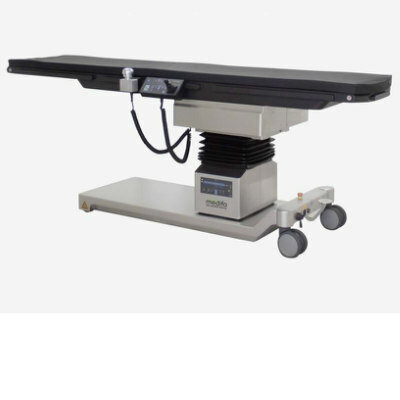MRI Reveals Toddlers with Autism More Likely to Have Enlarged Amygdala
By MedImaging International staff writers
Posted on 30 Jun 2009
Toddlers with autism appear more likely to have an enlarged amygdala, a brain region associated with functions such as the processing of faces and emotion, according to recent research. Moreover, this brain abnormality appears to be associated with the ability to share attention with others, an essential ability believed to predict later social and language function in children with autism.Posted on 30 Jun 2009
The study, performed by University of North Carolina at Chapel Hill (USA) researchers, was published in the May 2009 issue of the journal Archives of General Psychiatry. The lead author of the article is Matthew W. Mosconi, Ph.D., from the UNC Neurodevelopmental Disorders Research Center. Joseph Piven, M.D., director of the Carolina Institute for Developmental Disabilities at UNC, is the study's senior and corresponding author. "Autism is a complex neurodevelopmental disorder likely involving multiple brain systems,” said Dr. Piven, who is also a professor of psychiatry and pediatrics in the UNC School of Medicine and in the psychology department of the UNC College of Arts and Sciences. "Converging evidence from magnetic resonance imaging [MRI], head circumference, and postmortem studies suggests that brain volume enlargement is a characteristic feature of autism, with its onset most likely occurring in the latter part of the first year of life.” Based both on its function and studies of changes in its structure, the amygdala has been identified as a brain area potentially associated with autism.
Drs. Mosconi, Piven, and colleagues conducted an MRI study involving 50 autistic children and 33 control children. The children were given brain scans and tested for certain behavioral features of autism at ages two and four. This included a measure of joint attention, which involves following another person's gaze to initiate a shared experience.
Compared to the children in the control group, children with autism were more likely to have amygdala enlargement both at age two and age four. "These findings suggest that, consistent with a previous report of head circumference growth rates in autism and studies of amygdala volume in childhood, amygdala growth trajectories are accelerated before age two years in autism and remain enlarged during early childhood,” the authors wrote. "Moreover, amygdala enlargement in two-year-old children with autism is disproportionate to overall brain enlargement and remains disproportionate at age four years.”
Among autistic children, amygdala volume was associated with an increase in joint attention ability at age four. This suggests that alterations to this brain structure may be associated with a core deficit of autism, the authors noted. "The amygdala plays a critical role in early-stage processing of facial expression and in alerting cortical areas to the emotional significance of an event,” the investigators reported in their article. "Amygdala disturbances early in development, therefore, disrupt the appropriate assignment of emotional significance to faces and social interaction.”
Continued follow-up of research participants, now under way, will help determine whether amygdala growth rates continue at the same rate or undergo another period of accelerated growth or a period of decelerated growth in autistic children after age four, according to the investigators.
Related Links:
University of North Carolina at Chapel Hill














